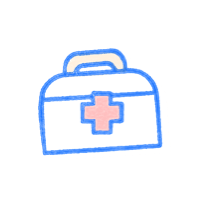Let’s dive into some real-life scenarios you might encounter in the field. We’ll explore a variety of patient cases, and together, we’ll determine the best interventions based on their symptoms and vital signs. This hands-on approach will sharpen your decision-making skills and prepare you for whatever comes your way.
Scenario 1: Mild Respiratory Distress
Patient Presentation:
- Respiratory Rate: 20 breaths per minute
- SpO2: 92%
- Speaking in full sentences
- Skin is cool and clammy
Assessment:
- The patient has a slightly low SpO2 but is speaking in full sentences and has a normal respiratory rate. The cool and clammy skin indicates mild distress.
Intervention:
- Nasal Cannula: Deliver 1 to 6 liters per minute to help raise the SpO2 to a normal level.
Scenario 2: Moderate Respiratory Distress
Patient Presentation:
- Respiratory Rate: 26 breaths per minute
- SpO2: 88%
- Speaking in one to two-word sentences
- Using accessory muscles to breathe, tripod position
Assessment:
- The patient has a significantly low SpO2, an elevated respiratory rate, and difficulty speaking in full sentences. The use of accessory muscles and tripod position indicates moderate to severe distress.
Intervention:
- Non-rebreather Mask: Deliver 10 to 15 liters per minute to improve oxygenation quickly. If SpO2 does not improve, consider further steps such as CPAP if the patient is alert.
Scenario 3: Severe Respiratory Distress (CPAP Candidate)
Patient Presentation:
- Respiratory Rate: 28 breaths per minute
- SpO2: 84%
- Speaking in one to two-word sentences
- Using accessory muscles to breathe, tripod position, alert and following commands
Assessment:
- The patient’s SpO2 is critically low, with a high respiratory rate and minimal speaking ability. The tripod position and accessory muscle use indicate severe respiratory distress, but the patient is alert and can follow commands.
Intervention:
- CPAP: Apply continuous positive airway pressure to open the alveoli and improve gas exchange. Monitor the patient closely for any changes in status.
Scenario 4: Respiratory Failure (BVM Candidate)
Patient Presentation:
- Respiratory Rate: 8 breaths per minute
- SpO2: 85%
- Unresponsive, not speaking
- Poor skin color, sluggish respirations
Assessment:
- The patient has a critically low respiratory rate and SpO2, is unresponsive, and has poor skin color. These signs indicate respiratory failure.
Intervention:
- BVM (Bag-Valve-Mask): Immediately begin ventilation to manage the airway and support breathing. Ensure the airway is open and clear of obstructions. Provide ventilations at a rate of about 12 breaths per minute, adjusting based on the patient’s response and oxygen saturation levels.
Scenario 5: Persistent Distress Despite Oxygen
Patient Presentation:
- Respiratory Rate: 24 breaths per minute
- SpO2: 89% on a non-rebreather mask
- Speaking in one to two-word sentences, using accessory muscles to breathe
Assessment:
- Despite being on a non-rebreather mask, the patient’s SpO2 remains low, and they are still struggling to breathe effectively.
Intervention:
- CPAP: Transition to continuous positive airway pressure to provide higher oxygen levels and support alveolar function. Monitor for improvement in SpO2 and overall respiratory effort.
Scenario 6: Acute Decompensation
Patient Presentation:
- Respiratory Rate: 30 breaths per minute
- SpO2: 82%
- Unable to speak, severe cyanosis, rapid deterioration in mental status
Assessment:
- The patient is in severe respiratory distress, unable to communicate, with critically low SpO2 and cyanosis.
Intervention:
- Immediate Airway Management: Prepare for potential intubation if within your scope of practice or initiate BVM ventilation while arranging for advanced airway management. Ensure continuous monitoring and rapid transport to a higher level of care.
Key Points to Remember
- Always assess the patient’s ability to speak, their respiratory rate, SpO2 levels, and any labored breathing signs.
- Use the mnemonic RROWL (Respiratory Rate, SpO2, Words per Sentence, Labored Signs) to guide your decisions.
- Visualize the scene and think critically about the next steps based on the patient’s presentation.
Practice these scenarios and think about how you would respond in real-life situations. By doing this, you’ll be better prepared to make quick, informed decisions in the field. Stay vigilant and trust your training!

